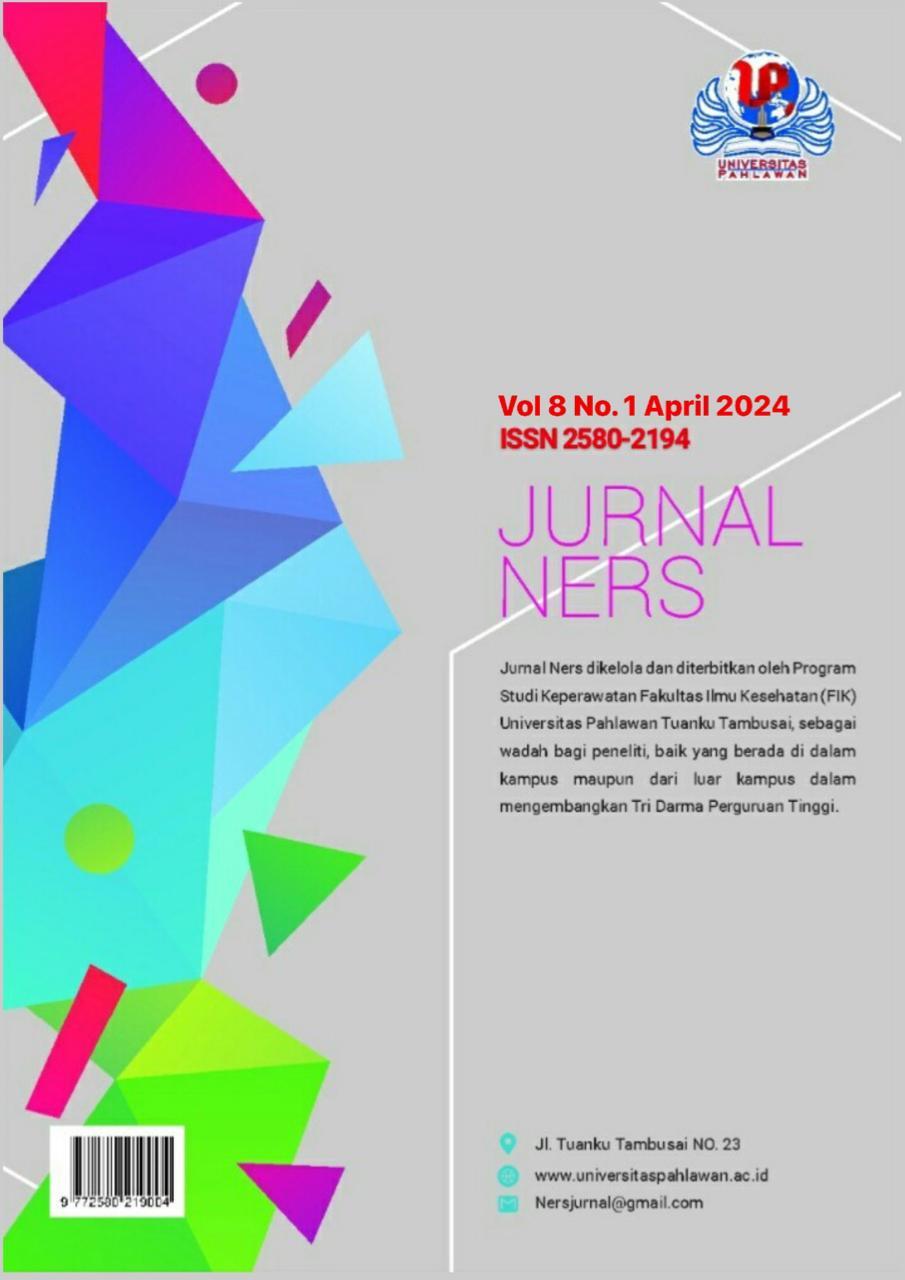Understanding Venenata Dermatitis and its Toxin: Case Report
DOI:
https://doi.org/10.31004/jn.v8i1.22380Abstract
Dermatitis venenata refers to a skin irritation reaction resulting from bites or direct contact between the skin and the saliva or hair of insects. This contact manifests as distinctive red patches on the skin, which may extend to surrounding areas and develop into painful blistering lesions. These lesions often exhibit a spreading pattern in areas of contact, commonly known as "kissing lesions." Without proper management, these blisters may lead to skin infections or leave lasting scars. Venenata dermatitis, linked to the Paederus genus toxin paederin, often occurs in warm, tropical regions. It presents with blistering, red skin, vesicular papules, and pustules in diverse patterns 8 to 24 hours after toxin exposure. Predominantly affected areas include the face, neck, shoulders, arms, and waist. "Kissing lesions" emerge when the initial lesion transfers to adjacent normal skin. Prompt diagnosis of dermatitis venenata is crucial, serving as a proactive measure to prevent exacerbation. Swift identification plays a pivotal role in facilitating timely interventions and implementing preventive strategies, reducing the risk of worsening symptoms. This expeditious diagnostic process is central to safeguarding against symptom escalation and ensuring effective management for overall skin health. In our case, a 27-year-old woman presented symptoms of redness, stinging, and itching around her neck area. Initially manifesting as redness, the condition progressed to blister-like formations within a few hours. The diagnosis of venenata dermatitis was established based on the patient's reported symptoms and objective findings from the dermatological examination. The physical examination revealed a well-defined red plaque with vesicles and erosions localized on the right side of the neck.Downloads
Published
2024-01-20
How to Cite
Godianto, F. ., & Suhardi, S. (2024). Understanding Venenata Dermatitis and its Toxin: Case Report. Jurnal Ners, 8(1), 307–311. https://doi.org/10.31004/jn.v8i1.22380
Issue
Section
Articles
License
Copyright (c) 2024 Jurnal Ners

This work is licensed under a Creative Commons Attribution-ShareAlike 4.0 International License.
Authors who publish with this journal agree to the following terms: Authors retain copyright and grant the journal right of first publication with the work simultaneously licensed under a Creative Commons Attribution-ShareAlike 4.0 International License that allows others to share the work with an acknowledgement of the works authorship and initial publication in this journal. Authors are able to enter into separate, additional contractual arrangements for the non-exclusive distribution of the journals published version of the work (e.g., post it to an institutional repository or publish it in a book), with an acknowledgement of its initial publication in this journal. Authors are permitted and encouraged to post their work online (e.g., in institutional repositories or on their website) prior to and during the submission process, as it can lead to productive exchanges, as well as earlier and greater citation of published work (See The Effect of Open Access).








